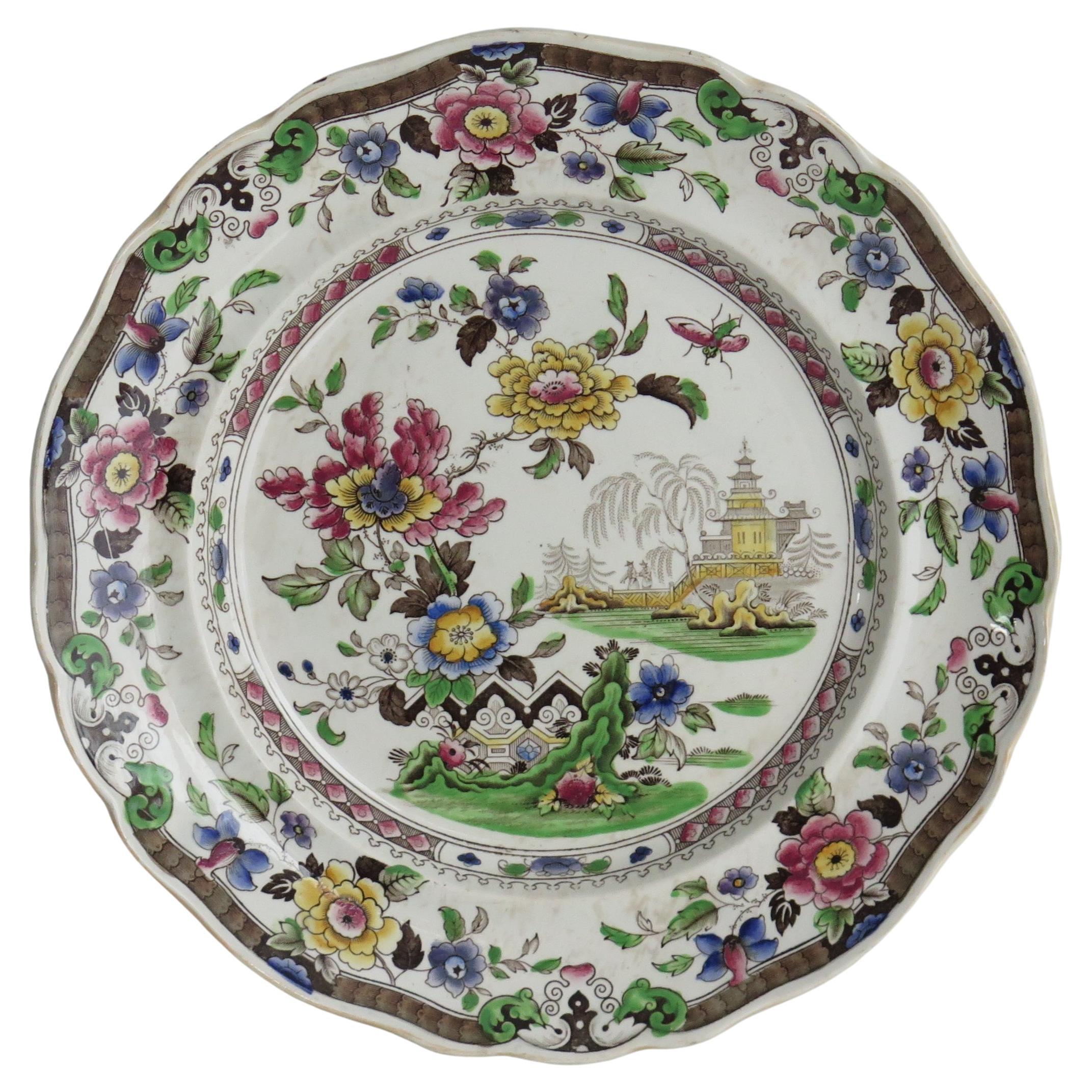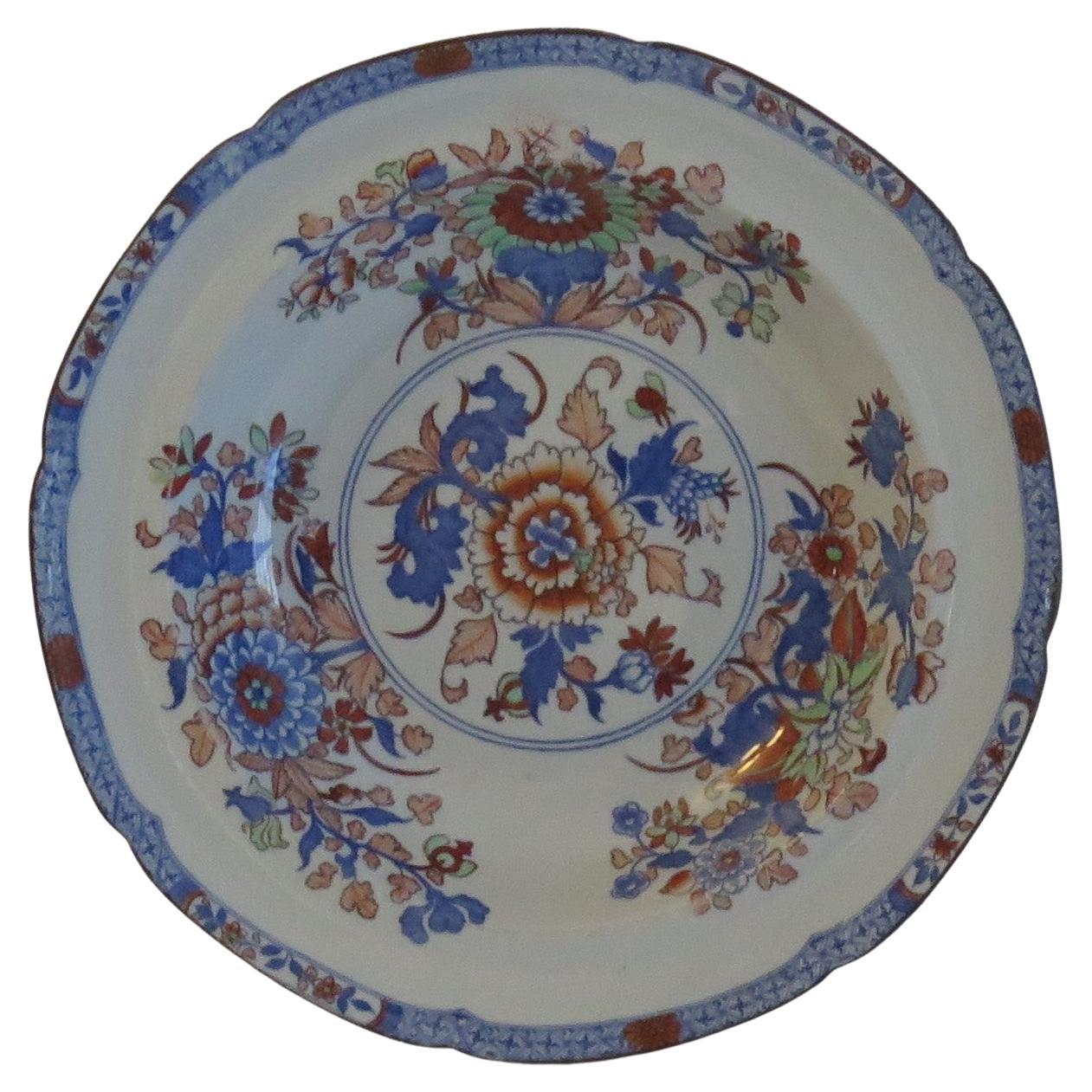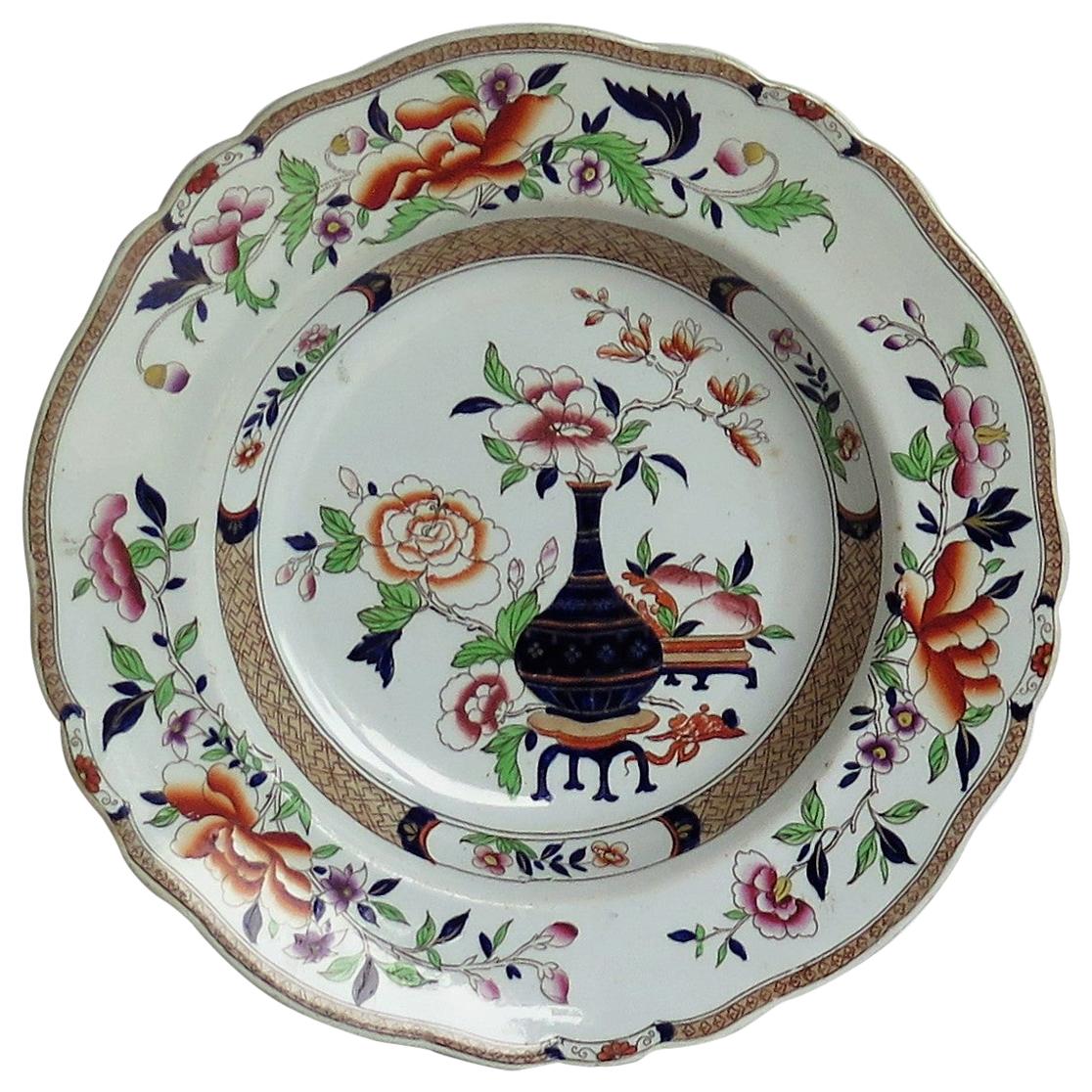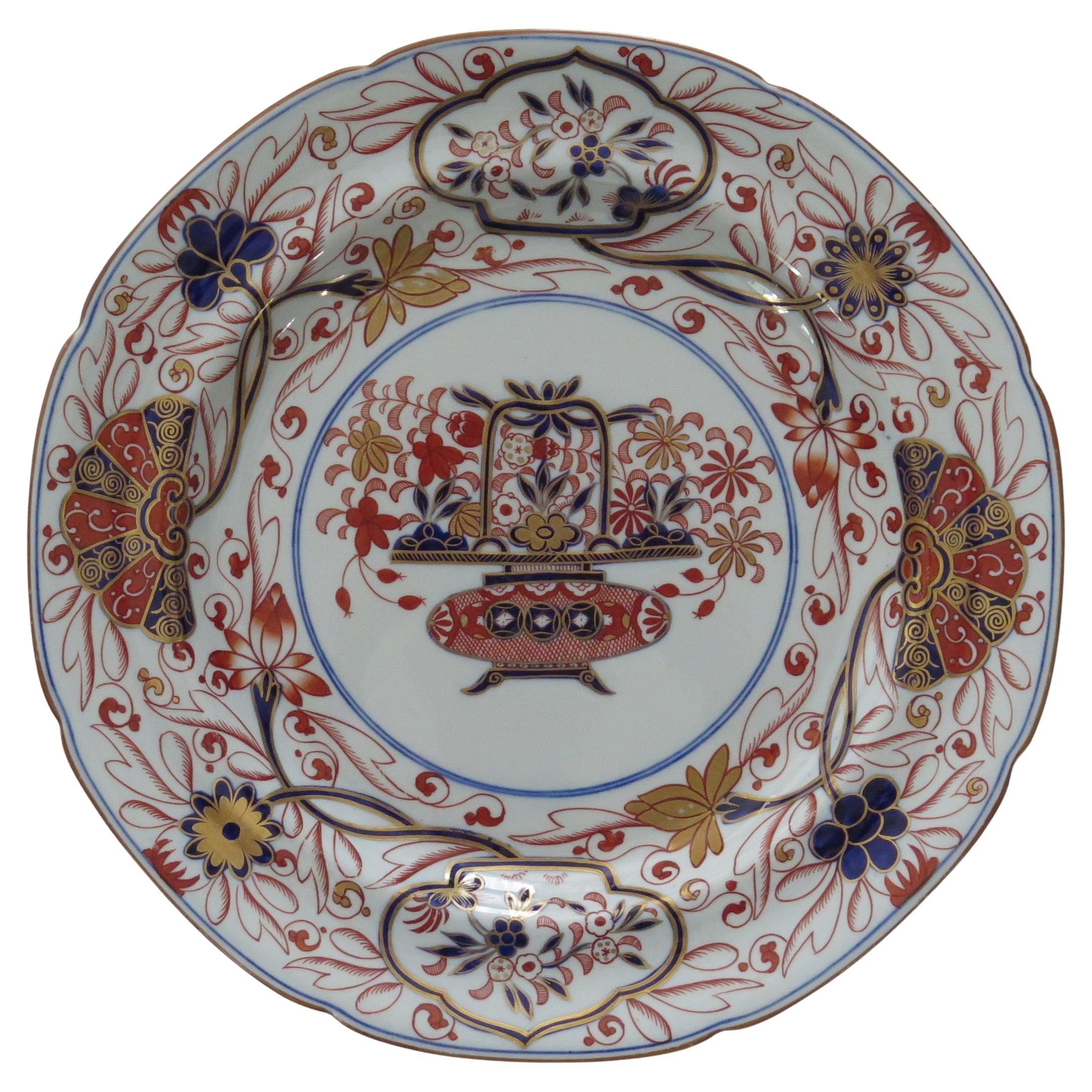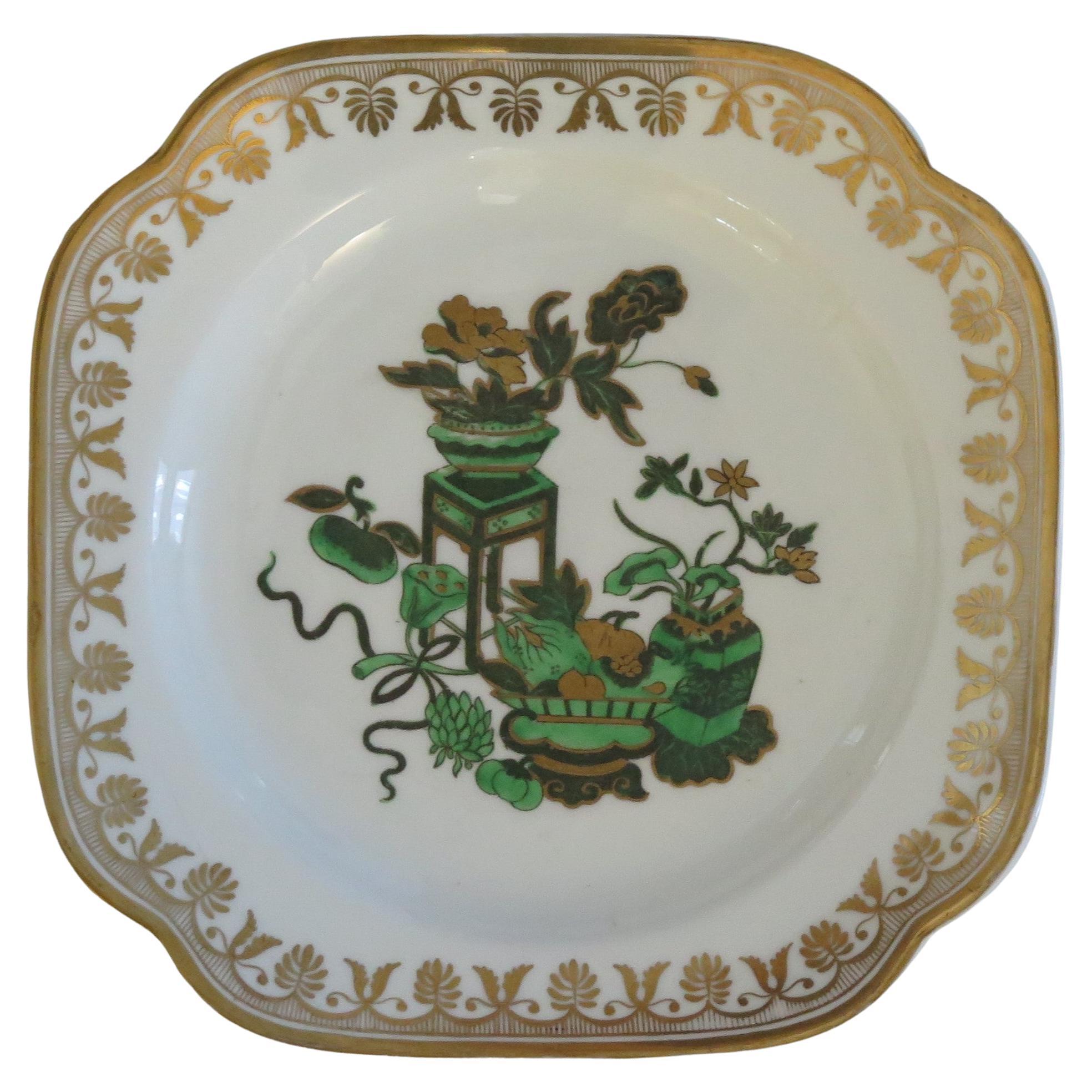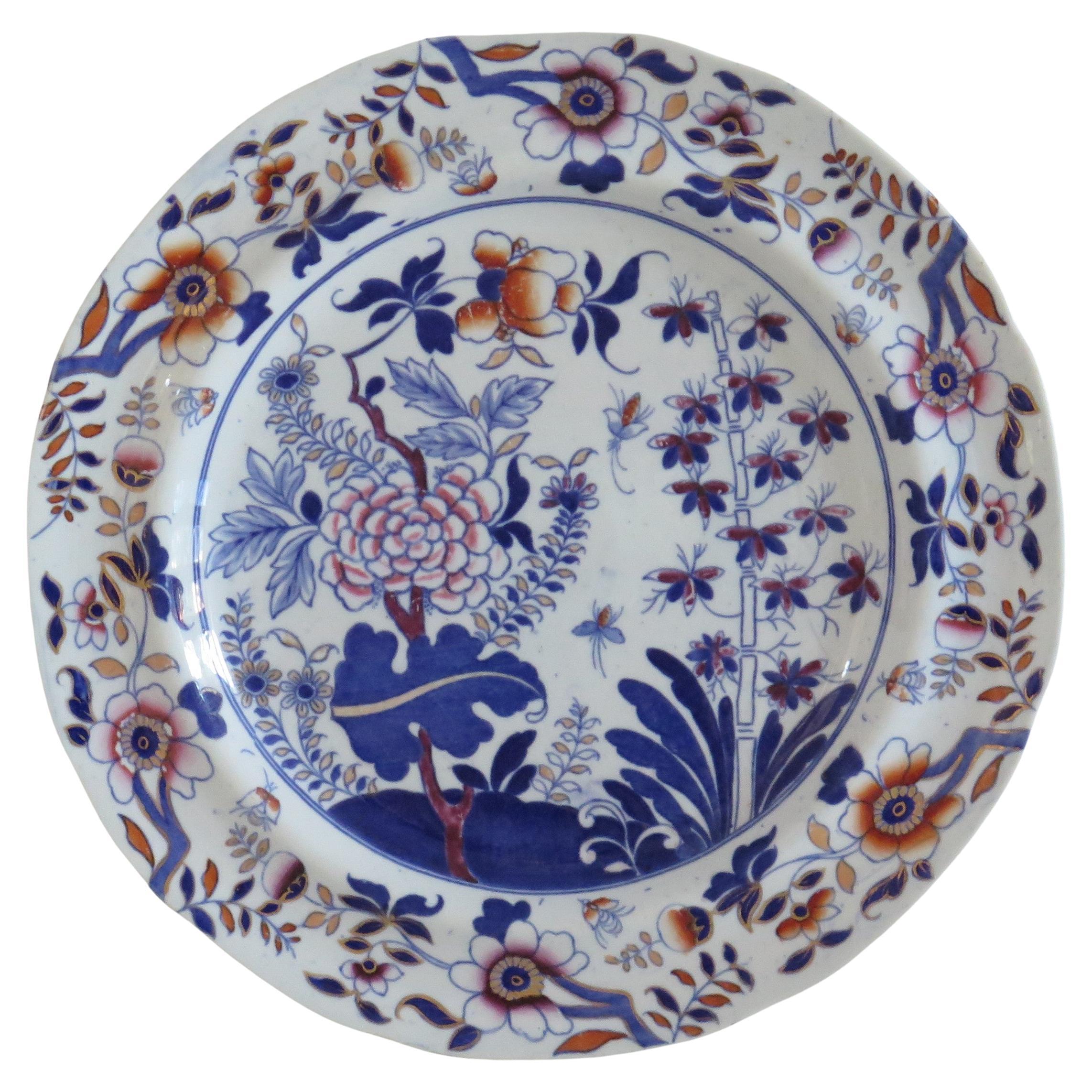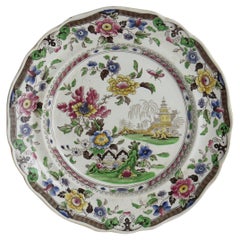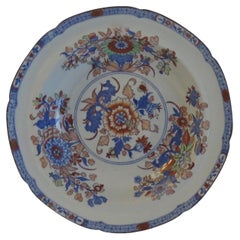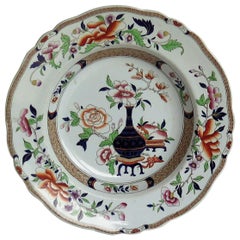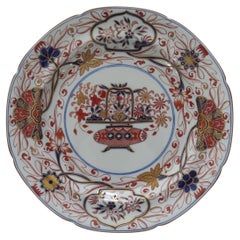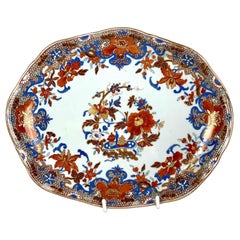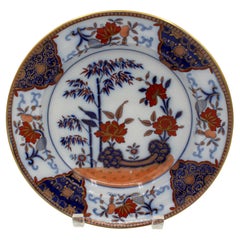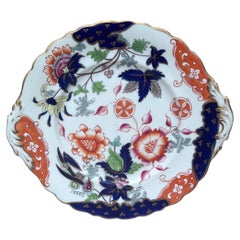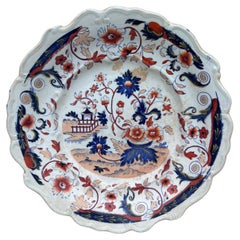Items Similar to Soup Bowl or Plate Pottery by Zachariah Boyle Chinese Flora Pattern, Ca 1825
Want more images or videos?
Request additional images or videos from the seller
1 of 12
Soup Bowl or Plate Pottery by Zachariah Boyle Chinese Flora Pattern, Ca 1825
$351.10
£255
€301.04
CA$482.91
A$537.14
CHF 281.78
MX$6,554.28
NOK 3,536.71
SEK 3,332.92
DKK 2,247.16
About the Item
This is a very good early decorative large earthenware pottery Soup Bowl or Deep Plate made by Zachariah Boyle of Hanley and Stoke, England, circa 1825.
The bowl/plate is well potted with a curvy indented rim.
The plate has a detailed chinoiserie pattern depicting a Chinese pagoda floral scene with a fence and flying insect and a very decorative floral border. The pattern would have been printed initially and then hand painted in various bold colors including cobalt blue, pink, yellow and green. This pattern is called "Chinese Flora"
The bowl has a black printed mark to the reverse with CHINESE FLORA written in a shield shaped cartouche with "ZB" written in a ribbon below. This maker with a similar mark is fully documented on Page 201 of the book; Godden's Guide to Ironstone, Stone and Granite Wears, by Geoffrey A Godden, published by The Antique Collectors Club.
The base mark dates this bowl to 1823-1828 which is the English, late Georgian period.
- Creator:Zachariah Boyle & Sons (Manufacturer)
- Dimensions:Height: 1.9 in (4.83 cm)Diameter: 10.5 in (26.67 cm)
- Style:Chinoiserie (Of the Period)
- Materials and Techniques:
- Place of Origin:
- Period:
- Date of Manufacture:circa 1825
- Condition:Wear consistent with age and use. Overall very good antique condition. Little sign of any use. Bold bright colours. Please see images for detail. NO Damage.
- Seller Location:Lincoln, GB
- Reference Number:Seller: P 1447-b1stDibs: LU990328949052
About the Seller
5.0
Platinum Seller
Premium sellers with a 4.7+ rating and 24-hour response times
Established in 1993
1stDibs seller since 2013
1,397 sales on 1stDibs
Typical response time: <1 hour
Associations
LAPADA - The Association of Arts & Antiques Dealers
- ShippingRetrieving quote...Shipping from: Lincoln, United Kingdom
- Return Policy
Authenticity Guarantee
In the unlikely event there’s an issue with an item’s authenticity, contact us within 1 year for a full refund. DetailsMoney-Back Guarantee
If your item is not as described, is damaged in transit, or does not arrive, contact us within 7 days for a full refund. Details24-Hour Cancellation
You have a 24-hour grace period in which to reconsider your purchase, with no questions asked.Vetted Professional Sellers
Our world-class sellers must adhere to strict standards for service and quality, maintaining the integrity of our listings.Price-Match Guarantee
If you find that a seller listed the same item for a lower price elsewhere, we’ll match it.Trusted Global Delivery
Our best-in-class carrier network provides specialized shipping options worldwide, including custom delivery.More From This Seller
View AllLarge Pottery Dinner Plate by Zachariah Boyle Chinese Flora Pattern, circa 1825
By Zachariah Boyle & Sons
Located in Lincoln, Lincolnshire
This is a good early decorative large earthenware pottery dinner plates made by Zachariah Boyle of Hanley and Stoke, England, circa 1825.
The plate ...
Category
Antique Early 19th Century English Chinoiserie Dinner Plates
Materials
Earthenware
Georgian Spode Soup Bowl or Plate in Japan Floral Pattern No. 2054, circa 1820
By Spode
Located in Lincoln, Lincolnshire
This is a beautiful bowl or soup plate produced by the Spode factory and made of ironstone pottery, which they call Stone China, in the early 19th Century, Circa 1820
The chinoiseri...
Category
Antique Early 19th Century English Chinoiserie Decorative Bowls
Materials
Ironstone
Early John Ridgway Soup Plate Aukland Chinoiserie Pattern, English, circa 1835
By John Ridgways
Located in Lincoln, Lincolnshire
This is a very decorative, Imperial Stone China (ironstone), large deep plate or soup bowl by John Ridgway, dating to the William IV period of the...
Category
Antique 19th Century English Chinoiserie Ceramics
Materials
Ironstone
Georgian Spode Dinner Plate A Ironstone Chinoiserie Pattern No.2283, circa 1820
By Josiah Spode
Located in Lincoln, Lincolnshire
This is a very beautiful hand painted dinner plate, produced by the Spode factory in the late Georgian period, Circa 1820.
This is pattern number 2283, the chinoiserie decoration ...
Category
Antique Early 19th Century English Chinoiserie Ceramics
Materials
Ironstone
Georgian Spode Plate or Dish Chinoiserie Pattern No. 1867 porcelain, circa 1820
By Josiah Spode
Located in Lincoln, Lincolnshire
This is a beautiful square plate or dish produced by the Spode factory and made of porcelain, in the early 19th Century, Circa 1815 to 1827.
The dish is well potted on a low foot ...
Category
Antique Early 19th Century English Chinoiserie Decorative Bowls
Materials
Porcelain
Dinner Plate by Copeland Late Spode in Chinoiserie Pattern No. 4089, circa 1850
By Copeland Spode
Located in Lincoln, Lincolnshire
This is a beautiful plate in the Chinese inspired pattern number 4089, produced by the Copeland - Late Spode factory and made of earthenware pottery called Pearl-ware, in the mid 19th century, circa 1850.
This plate is well potted with a recessed rim.
The pattern is transfer printed under-glaze in cobalt blue, then carefully hand painted in bold coloured enamels over-glaze in Gilt Heightened, Rare Pattern Number '4089' which Depicts Oriental Flowers including Bamboo, Peonies and Prunus Blossom in a garden setting with insects.
Similar plates of this period are shown in Steven Smith's book called Spode and Copeland, published by Schiffer.
The plate is fully marked to the base, with a transfer printed Copeland Late Spode...
Category
Antique Mid-19th Century English Chinoiserie Ceramics
Materials
Pottery
You May Also Like
Antique Chamberlains Worcester Porcelain Dish in Kakiemon Style England Ca. 1810
By Chamberlains Worcester
Located in Katonah, NY
Painted at Chamberlain's Worcester around 1810, this dish draws inspiration from 17th-century Japanese Kakiemon palette and design.
The style showcases enamels in a distinctive Kakie...
Category
Antique Early 19th Century English Regency Decorative Dishes and Vide-Poche
Materials
Porcelain
Circa 1810-20 Stone China Soup Plate by Davenport
By Davenport Porcelain
Located in Chapel Hill, NC
A Circa 1810-20 Soup Plate, Stone China by Davenport, English. Marked Davenport, Longport, Staffordshire Stone China. A rich Imari design & palette (pattern #135). Auspicious symbols...
Category
Antique Early 19th Century English Georgian Dinner Plates
Materials
Porcelain
English Ironstone Chinoiserie Platter, circa 1890
Located in Austin, TX
English ironstone platter circa 1890.
Chinoiserie or Imari style, decorated with flowers.
Category
Antique 1890s English Chinoiserie Platters and Serveware
Materials
Ceramic
19th Century English Chinoiserie Plate
Located in Austin, TX
19th Century English Chinoiserie Plate.
9 inches diameter.
Category
Antique 1890s English Chinoiserie Dinner Plates
Materials
Ceramic
English Spode Porcelain Jewelry Dish Chinoiserie Design
By Spode
Located in New York, NY
A very beautiful English Spode porcelain 'jewelry' dish with a chinoiserie design, circa 20th century, England. Piece has a beautiful design including its elevated form 'tazza'-like....
Category
20th Century English Chinoiserie Decorative Dishes and Vide-Poche
Materials
Porcelain
$380 Sale Price
43% Off
English Ironstone Chinoiserie Platter, circa 1890
Located in Austin, TX
English ironstone platter circa 1890.
Chinoiserie or Imari style, decorated with flowers.
Category
Antique 1890s English Chinoiserie Platters and Serveware
Materials
Ceramic
More Ways To Browse
Large Chinese Plates
Insect Plates
Pink Floral Plates
English China Plates
Early English Pottery
Pink Rim Plates
Antique Stone Bowl
Chinese Green Bowl
Pagoda Silver
Pink China Plates
Antique Yellow Glass Bowl
Cobalt China Plates
Chinese Shield
19th Century Dinner China
Cobalt Blue Bowl Antique
Chinese Late 19th Century Bowl
Pagoda Plate
Antique Green Pottery Bowl
